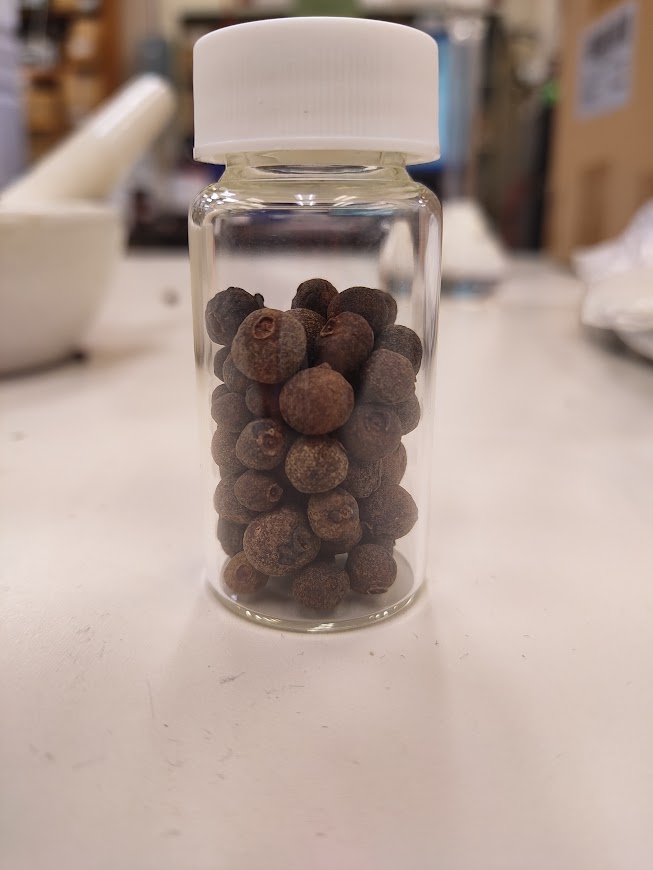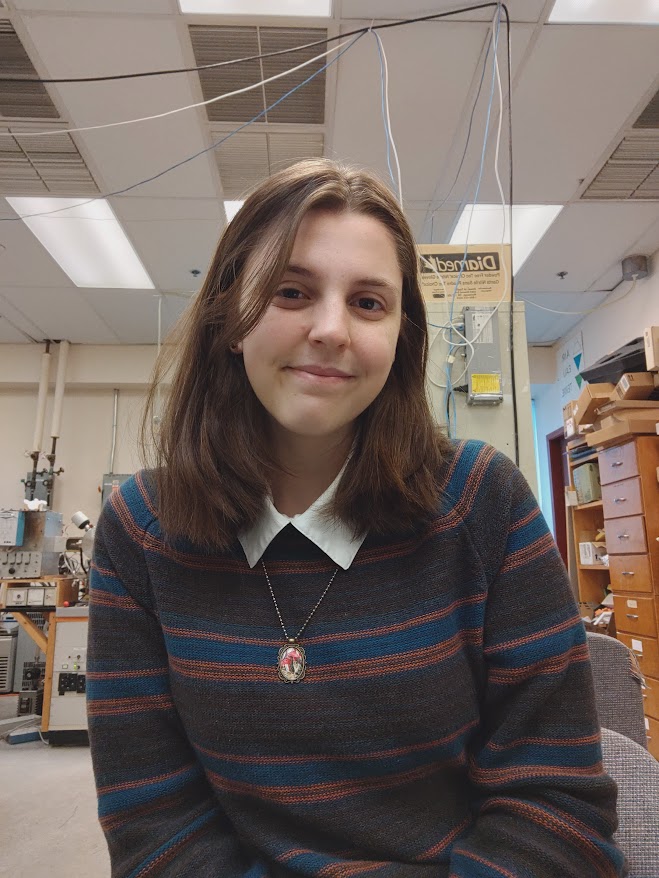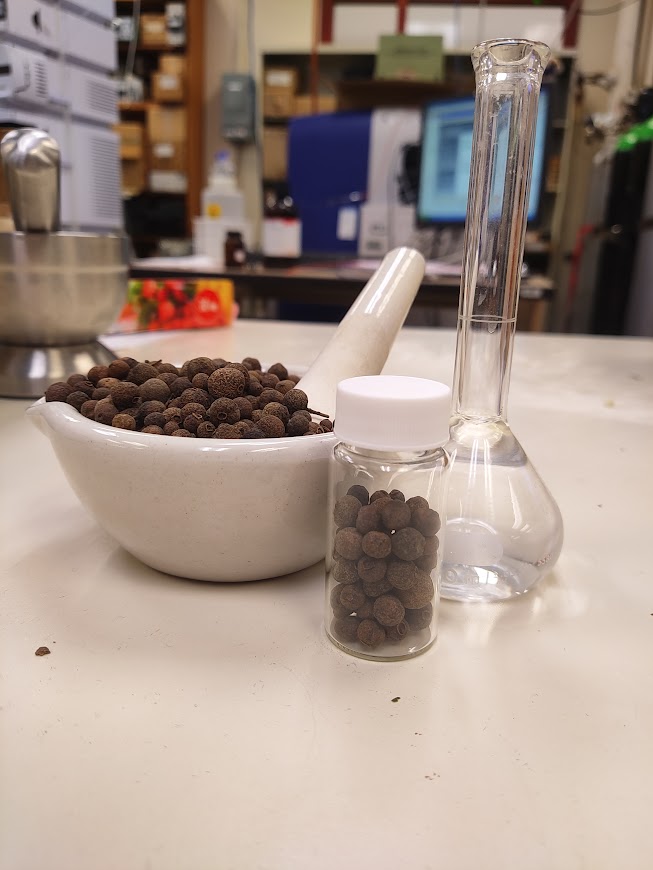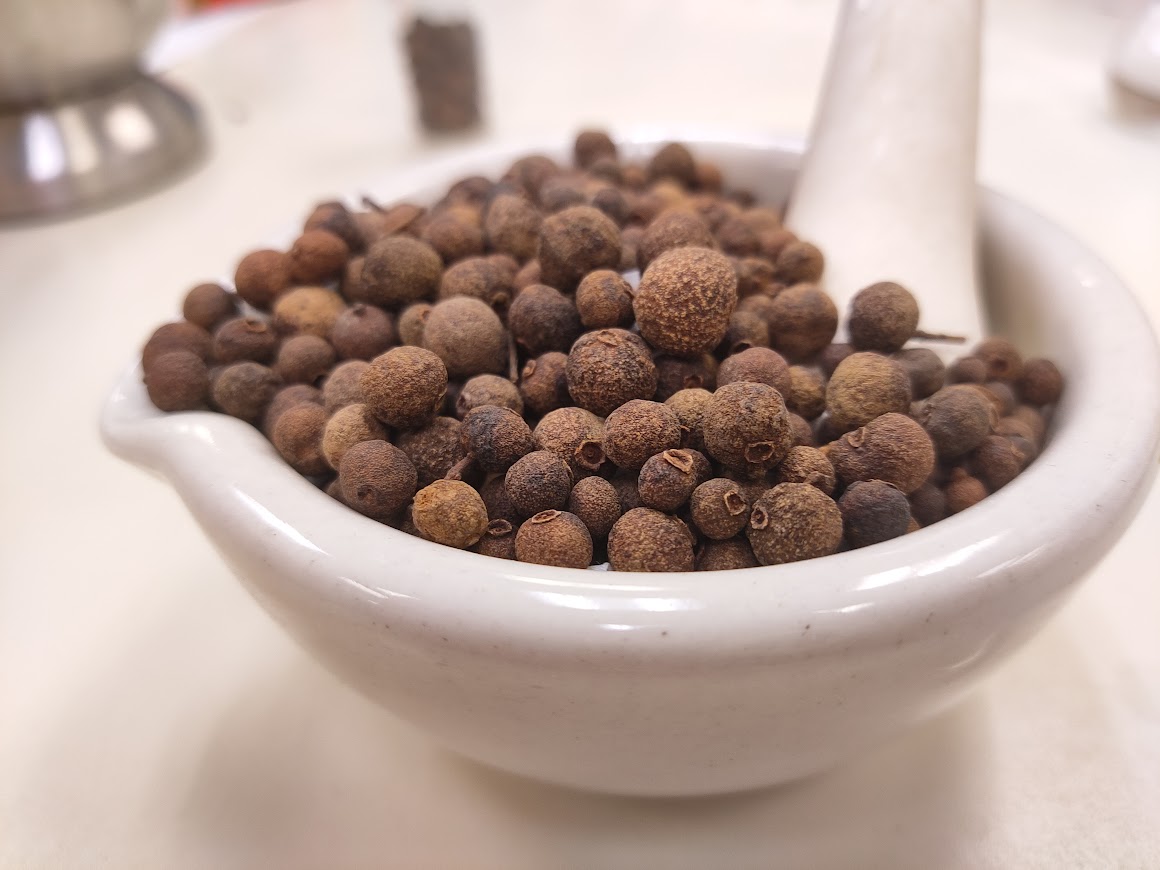
Allspice Hydrosol
Allspice is the dried, unripe berry of the allspice tree, native to the Greater Antilles, the south of Mexico, and Central America. It has a spicy, warm scent reminiscent of clove. It is commonly used in many desserts, in addition to some savoury dishes.

The term “allspice” was coined in the 1600s by the English, who valued it as a spice which combined the flavours of clove, nutmeg, and cinnamon. While commonly used in a variety of desserts, allspice is a key ingredient of Caribbean cuisine, used in popular dishes such as jerk chicken. Allspice tea is also purported to have some health benefits, such as reducing nausea and pain. [i]
[i] Oxford English Dictionary (2 ed.). Oxford, UK: Clarendon Press. 1 March 1989. ISBN 978-0-19-861186-8. Retrieved 12 December 2009.

I’m Rose Anderson-Duvall, an USRA student working in the J. L. Holmes Mass Spectrometry Facility in summer 2023. I am an undergraduate student entering my third year of Biopharmaceutical Science at
uOttawa. My mother instilled a love of science in me when I was very young, and I never grew out of it. Studying hydrosols is, among many other things, a brilliant insight into the metabolites of plants, a perfect intersection between my two passions, biology and organic chemistry.
Working in this laboratory, I’ve learned how to analyze, identify, and quantify compounds
using the GC-MS in addition to learning various extraction techniques for making hydrosols.

Creation of Allspice Hydrosol
The allspice hydrosol was made by blending 113.3g of dried allspice berries into a coarse powder. The powder was then put into a microwave vessel with 250mL of boiling distilled water and left to soak overnight. The next day, a 400mL beaker was placed in the vessel and a 250mL ice cone was fitted to the lid. The whole vessel was placed in a microwave on high power and left to run for 9 minutes. After this, the liquid that was collected in the beaker was poured into a collection bottle and then the beaker was replaced into the extraction vessel. A new ice cone was fitted to the lid and the process was repeated twice more. Oil droplets were visible in the hydrosol but could not be separated as the amount was too small to separate properly.

Analysis of Hydrosol
The allspice hydrosol was put through SPE (solid phase extraction) prior to being injected into the GC-MS. This is done in order to separate the analytes from the water and elute them with a nonpolar solvent (1:1 MeOH:ACN). It also ensures larger particles which may damage the GC column are removed.
Allspice was a relatively complex hydrosol containing a total of seven compounds. The compound in allspice at the highest concentration is eugenol, at a concentration of 0.52 g/L. The second most abundant compound in the hydrosol is a derivative of eugenol: eugenol methyl ether. Eugenol methyl ether is present in the hydrosol at a concentration of 0.15 g/L.
Conclusion
The molecule in the allspice hydrosol at the highest concentration is eugenol at a concentration of 0.52 g/L. While eugenol has potential medical applications, the allspice hydrosol would not be an ideal source of eugenol due to its complexity. Furthermore, eugenol is present at higher concentrations in clove hydrosol. However, the allspice hydrosol could have culinary applications (such as use in baking and marinades) as it has retained the uncompromised scent of allspice. It could also have aromatherapy applications.
